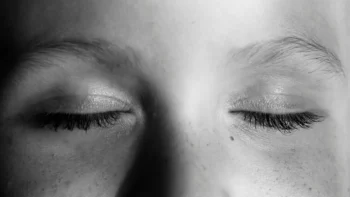If you’re one of 14 million people in the U.S. who don’t have perfect vision, you may have thought about getting corrective surgery. But what if you’re also one of the 24.4 million who have cataracts?
Cataracts affect more than 20 million Americans over the age of 40. That number is only expected to grow — reaching a projected 50 million by 2050. Each year, more than three million people have surgery to remove those cataracts, making it the most popular surgery in the country.
Most cataract surgeries lead to great visual results, even improving the clarity of vision from before the surgery. However, a small percentage of patients might need a “tune-up” to refine their vision post-surgery.
While it’s unnecessary for everyone, some people can benefit from getting LASIK after a cataract procedure to help them live lens-free. So when — and how — would you get LASIK in Las Vegas after cataract surgery? Let’s explore what the process looks like.
LASIK and Cataract Surgery: How It Works
A cataract is the slow clouding of the eye’s natural lens, usually progressing with age and blurring the vision over time. To replace the lens affected by cataracts, a surgeon will insert an artificial lens — this lens can include a prescription for patients with refractive errors. Today’s cataract surgery is modern and precise, using the best equipment to produce the best possible results. However, complete accuracy is never guaranteed. Some patients will still need some visual correction after the surgery.
For some patients, this isn’t a problem. Visual issues, whether nearsightedness or farsightedness, can be resolved using contact lenses or prescription glasses. But other patients may want to leave lenses behind and enjoy clear vision.
That’s where LASIK eye surgery comes in. LASIK is a commonly performed procedure to correct vision. The procedure involves using lasers to reshape the cornea, so anyone with an eye prescription can enjoy near-perfect vision. More than 90% of LASIK patients end up with 20/20 vision, with some even experiencing vision better than 20/20.
During the surgery, a tiny flap is created in the cornea using an advanced surgical laser. The flap is then folded back, where another laser reshapes the cornea, allowing it to focus light more effectively on the retina. Once the cornea is reshaped, the surgeon puts the flap back into place and allows the eye to heal naturally.
The procedure can take as little as 30 minutes, performed painlessly with topical anesthetic drops. While there may be some uncomfortable side effects post-procedure, it only takes days before you can get back to your day-to-day life.
Can You Get LASIK After Cataract Surgery?
The short answer is yes. You can get LASIK after cataract surgery, provided your eyes have fully recovered. However, it might not be fully necessary. It all depends on how your vision develops post-surgery.
Cataract surgery involves replacing the eye’s cloudy lens with an IOL, or intraocular lens implant. If you already have a prescription, that can be built into the implant to improve your vision post-surgery. In some cases, however, some residual refractive errors will be left behind.
In about one out of ten cases, there isn’t perfect alignment between the implant and the eye prescription. This can be due to corneal surface irregularities, prior LASIK surgeries, photorefractive keratectomy (PRK), or radial keratotomy (RK). More commonly, there are minor errors due to the complexity of calculating the prescription strength of the implanted lens.
For these cases, one possible solution is LASIK. If you’ve had refractive cataract surgery, but your vision still isn’t 20/20, corrective surgery can offer a solution to fine-tune your vision.
What to Expect from LASIK After Cataract Surgery
A patient needs relatively healthy eyes to be a good candidate for LASIK. That means it can’t be performed if you have cataracts. However, once those cataracts are removed, LASIK can be used to correct any remaining prescription.
A LASIK tune-up can help people who have undergone cataract surgery get clearer vision. As a non-invasive and accurate procedure, LASIK is an effective way to correct residual errors if you’re not satisfied with the quality of your vision. For people recovering from cataract surgery, it also offers the freedom of living without glasses or contact lenses.
Before getting LASIK, the eyes must be fully healed. On average, patients wait three months after cataract surgery before becoming eligible for LASIK, but it may take up to six months. Once the healing process is complete, an eye surgeon can examine the eyes to ensure you’re a prime candidate for the procedure.
All LASIK surgery can come with some risks and side effects, but some patients who have had cataract surgery may experience fluctuating eye pressure after cataracts have been removed. These temporary spikes in eye pressure can lead to complications — patients should wait until the pressure has stabilized before having LASIK surgery.
If pressure levels remain high after the cataract surgery, traditional LASIK is not recommended, as the laser used may cause a rise in eye pressure. However, other procedures may still be available to correct the issue.
LASIK Las Vegas After Cataract Surgery
If you’re frustrated with ongoing vision problems — from refractive errors to cataracts — why let these issues affect your quality of life? LASIK surgery after cataract surgery is an effective and permanent solution to ensure your vision is as clear as possible. While not everybody needs LASIK after cataract surgery, the procedure can provide a “tune-up” to correct any lingering problems and keep your life lens free.
Whatever you decide, the first step is to seek medical advice from a qualified ophthalmologist. A consultation will help determine whether you’re the right candidate for LASIK. At Brimhall Eye, we bring years of experience to the table to make sure your surgery is a success. We personalize our services for each person’s eye care needs, spending more time with each patient to ensure they get the ideal outcome. Learn more about the way we do LASIK or book a free consultation today to decide if this is the right choice for you.





